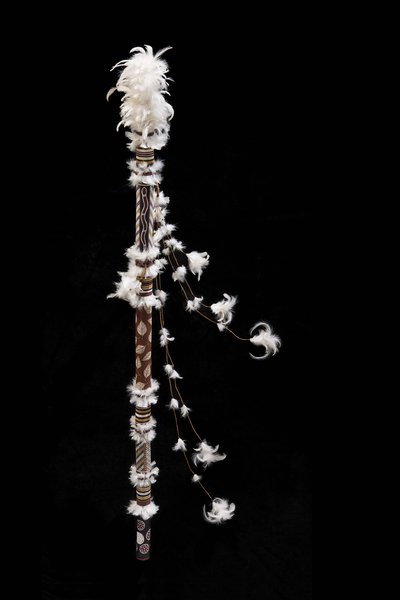This display presents several examples of the Museum’s important collections of Indigenous Australian artefacts. These cultural objects are easily admired for their beauty, but their true value and meaning are to be found elsewhere, in the central roles they play in the cultures and beliefs of their creators.
Pointing heavenwards in the centre of this showcase is a morning star pole from Elcho Island in the Northern Territory. In the mythology of the Dhüwra Yolngu, Banumbirr, the morning star, came from the east across the sea, creating the land and the animals as she passed. In her trail of light, Banumbirr gathers up the souls of the dead and returns them to their resting place. The feathers on the top of the pole represent the star, the long arms its trail of light and the short arms the cradle from which the spirits overlook the earth.
The Banumbirr ceremony reflects a close knowledge of the natural world. We know the morning star as the planet Venus, and Banumbirr ceremonies are timed with the appearance of Venus ahead of the rising sun, which varies from year to year.
The two bark paintings on the back wall to the right of the morning star pole come from Groote Eylandt, the home of the Anindilyakwa people. The paintings depict animals important in the lives or beliefs of the Anindilyakwa – including kangaroos, jellyfish, crabs, fish, lizards and turtles – as well as local landscapes and symbolic motifs. More than mere pictures, they embody an intimate knowledge of the local environment, and in part serve to record this knowledge for the next generation.
To the left of the morning star pole are tunga, or painted bark baskets from the Tiwi people of Bathurst and Melville Islands. Again the true value of these beautiful objects lies in their role in the ceremonies of their creators. During funerals tunga are placed on top of tutini, or grave posts, as gifts for the spirits of the dead as they travel up the tutini from the grave to the spirit world.

